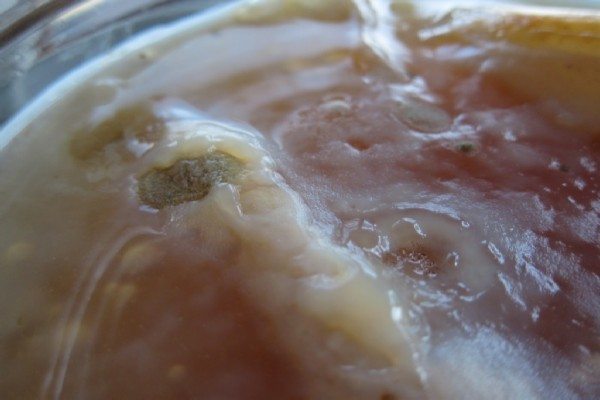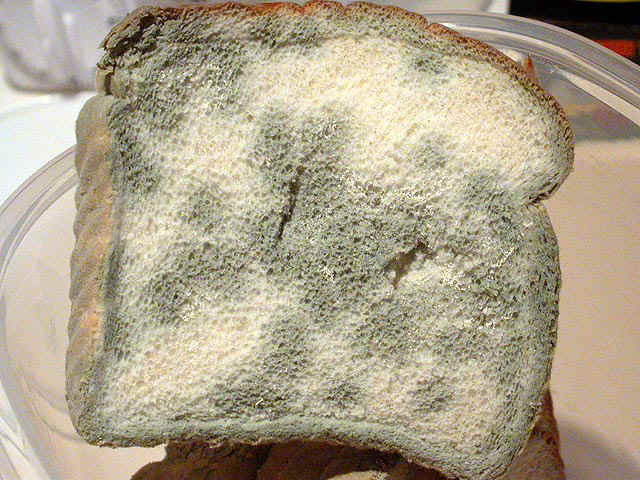What To Do If Your Kombucha Has Mold
Making kombucha at home is easy, but many first-time kombucha home brewers have a hard time learning what a healthy SCOBY looks like and worry that their kombucha has, or will develop, mold on it. In this article, you’ll learn why you generally don’t have to worry about mold in the kombucha, some of the reasons why mold may develop, and what to do if you find mold growing on your kombucha.
If you think your SCOBY has mold on it, do read my complete guide on figuring out if your scoby has mold on it or not. Sometimes a new SCOBY formation for the first couple days can look a bit like there are white mold spots growing on the surface. But this is simply a NEW SCOBY forming.
Kombucha Fights Molds Naturally
Mold is a fungus, and the SCOBY (Symbiotic Colony Of Bacteria and Yeast) contains fungus; yeast is a type of fungus, but the microorganisms in the SCOBY are single-celled creatures living and working together (that’s what “symbiotic” means), while a mold is one single organism made up of connected filaments, or branches. When you see a spot of mold, that’s a cluster of filaments from many different mold organisms.
The low-pH environment of correctly brewed and fermented kombucha is toxic to most molds. The yeast and bacteria in the SCOBY thrive in this acidic environment, and the action of a mature SCOBY creates enough acids that the kombucha tea becomes an effective antimicrobial liquid.
Why Mold Might Develop
When you’re first starting a batch of kombucha tea, it’s important to make sure the starting pH is acid enough to fight mold. The sugar and other sweeteners that you’re putting into the brewed tea that the SCOBY “eats” are also food for mold spores, and until the SCOBY transforms enough of the sugars into acids, there is a risk that your kombucha tea could develop mold. Always use the right ratio of ingredients for brewing kombucha to avoid this problem.
Even if you’ve put in enough starter or vinegar to keep the pH levels low, you still need to protect your SCOBY from airborne mold spores and other contaminants. That’s why it’s also important to cover your brewing container. You need to use material that is thin enough to allow for the free flow of oxygen and carbon dioxide (the SCOBY needs oxygen to process the nutrients in the sweet tea, and gives off CO2 during that process) but the material also has to be thick enough that nothing can get in to affect the SCOBY. Using the right equipment for brewing kombucha will help you avoid accidentally contaminating the kombucha tea and the SCOBY.
The extra SCOBYs in your SCOBY hotel need to be protected in the same way: with an acidic liquid to keep them moist and healthy, and a protective cover to keep out dust and mold.
How to Tell If It’s Really Mold
If you’ve ever seen mold on a piece of bread, or on an old piece of cheese, that’s pretty much what you’ll be looking for when checking for mold. Here are some ways of determining whether you’re seeing mold, or just a variation in the color and texture of a normal healthy SCOBY.
- Mold is usually green, blue, black, or white. Some people worry that the brown spots that can form on top of a SCOBY, or the brown strands that float underneath it, are mold. However, this is a natural form of the yeast colonies in the SCOBY.
- Mold is usually fuzzy. A healthy SCOBY will be smooth and moist, though it may have some dry patches if you haven’t kept enough liquid in your SCOBY hotel, or if the air in your kitchen is very dry.
- Mold usually forms circles or rings. The filaments in the mold spores tend to grow out evenly from the center.
- Mold is usually on the top of the culture. Unlike the yeasts and bacteria in the SCOBY, which can work in both an aerobic (with oxygen) and an anaerobic (without oxygen) environment, mold spores need oxygen. In general, things hanging down from the bottom of the SCOBY, or at the bottom of the kombucha liquid, will not be mold.
The two types of mold that are the most common contaminants are in the Aspergillus and Penicillium families. Both of these mold strains include subspecies that have the potential to be toxic for humans, and both are commonly found indoors and out.
What To Do With Moldy Kombucha
Throw it out.
Really.
Although there are people who say that you can simply scrape or wash the mold off of a SCOBY, or lift patches of mold off the top of the kombucha tea, why risk your health? If you’ve been brewing kombucha, you’ll have a good supply of extra SCOBYs and you won’t lose any time in the brewing cycle. Yes, you’ll lose a little time and a little money for the ingredients you’re having to throw away, but that’s better than losing money because you’re too sick to go to work, or because you have hospital bills to pay.
There are several things you can do – that you should be doing, as a matter of fact – to prevent mold in kombucha, and if you have found mold growing on your SCOBY or floating on top of your kombucha tea, you should:
- Throw out the SCOBY and the tea.
- Sanitize your brewing container and all utensils with hot soapy water, followed by a thorough rinse with filtered or distilled water, and a final rinse with distilled white vinegar.
- Be sure your hands are clean and free of soap residue before you start your next batch, especially when you’re handling the new SCOBY.
- Make sure that the sweet tea mixture has cooled down to between 70-80F before you add the new SCOBY.
- Use distilled white vinegar as your starter, to make sure that the pH level is low enough to protect the SCOBY and fight off mold.
- Keep the brewing container covered with a finely-woven cloth that is secured tightly around the lid of the container.
- Keep the brewing container warm, between 70-80F, until you are ready to remove the SCOBY.
- Store your SCOBY in a container that has enough liquid to completely cover the top of the SCOBY. The liquid should have a pH that is lower than 3.0.




